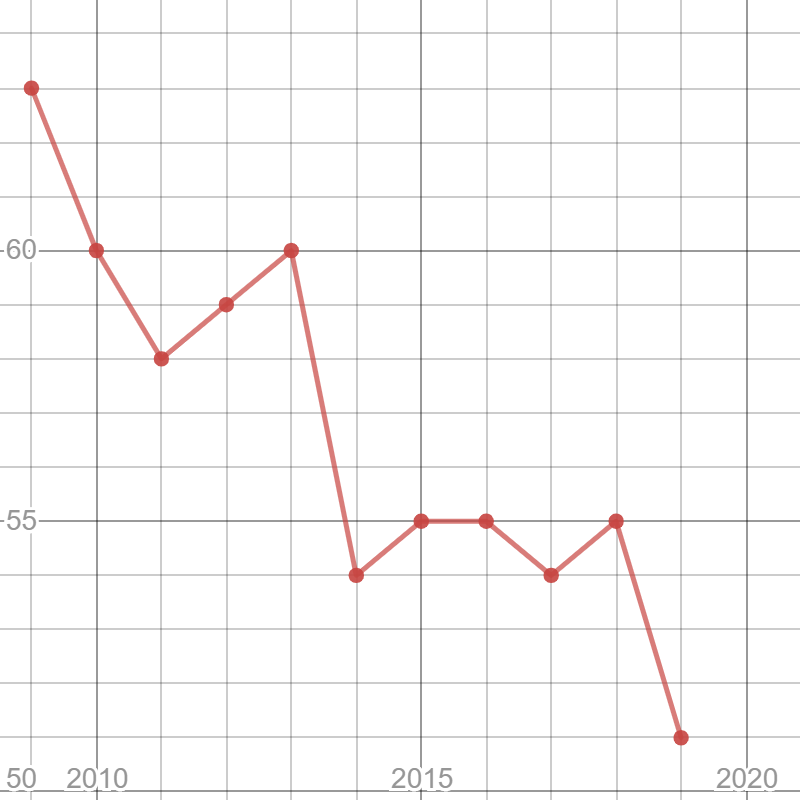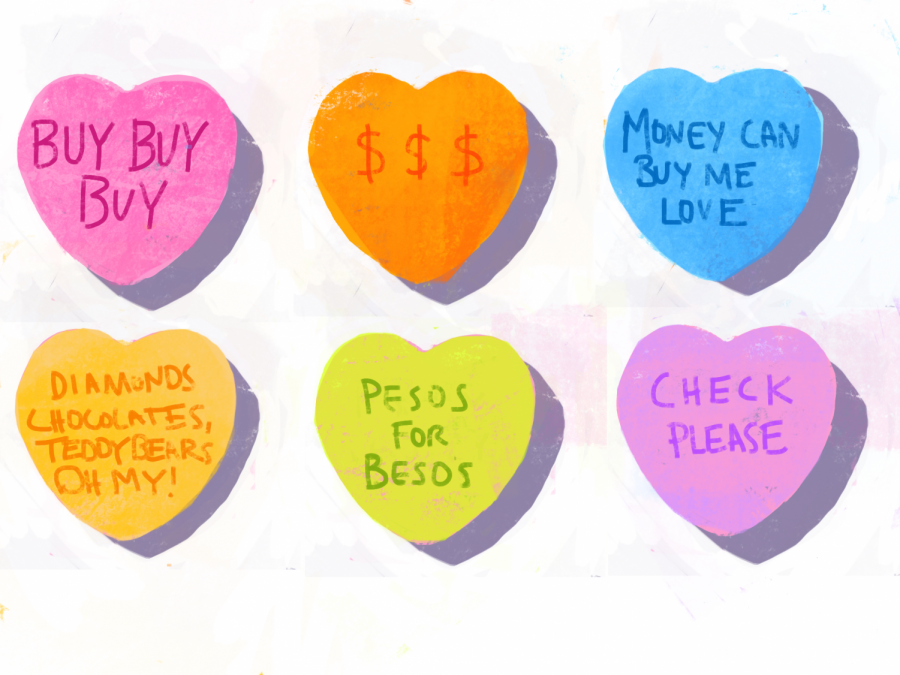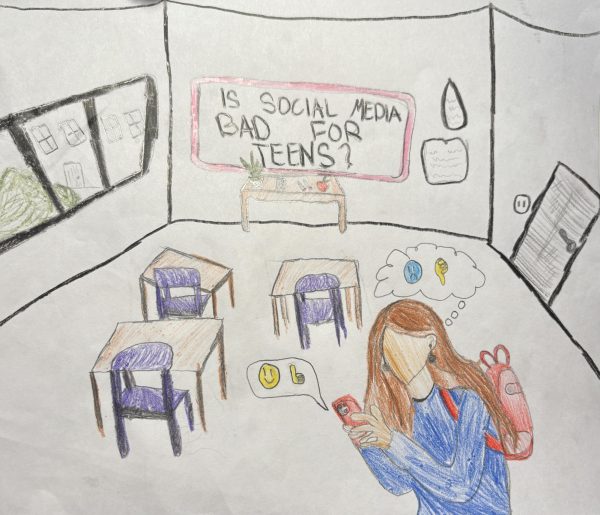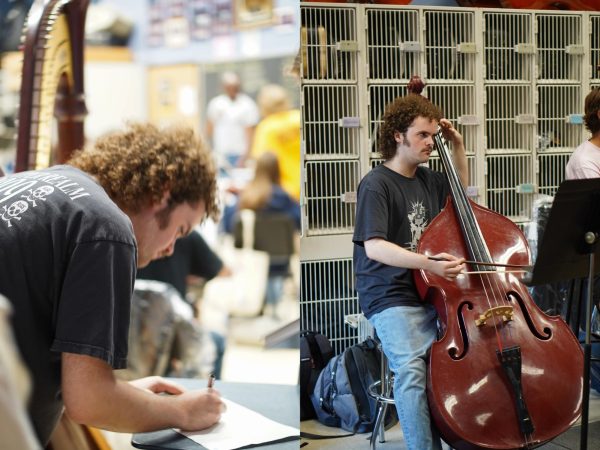Spending money for your honey
Has Valentine’s Day become a capitalist holiday?
The expectation of spending big bucks on Valentine’s Day emerged in the 1980s when the holiday took on its current capitalist form. Advertisements began pushing the idea of buying jewelry, chocolates and other presents for your valentine. Cartoon by Bella Russo
February 13, 2020
Have you ever noticed that every year it seems Valentine’s Day season starts earlier and earlier? Or how there’s a seemingly endless stream of commercials claiming the only way you can truly express your love to your valentine is to buy ridiculously overpriced jewelry or get them this brand of chocolates? For most of high school, I have been single, so I haven’t been concerned with chocolates or flowers. But this year, that has changed. I began thinking about Valentine’s Day before I even asked my significant other out. I had a moment of self-realization, and questioned why I was stressing about gifts and what I should plan more than a month in advance. This led me to do some searching and find out how and why the day of love became so much about gifts and spending money to show your affection.
Although there are many myths and legends surrounding the origin of the holiday, V-Day came from a Pagan holiday during the Roman Empire called Lupercalia. It occurred mid-February, and was a festival to celebrate fertility and pay homage to the god of agriculture, Faunus. It shared some elements of how we celebrate today, but much of the rituals involved animal sacrifice and auctioning off women to the bachelors in town. Valentine’s Day began to change around the fifth century when it was outlawed due to the rise of Christianity. It was officially named St. Valentine’s Day and decriminalized towards the end of the century. It was however not associated with love for much longer. It’s believed that since the mating season of birds coincided with the holiday, it eventually became associated with love. As for St. Valentine himself, there are many theories as to who he is and how he became the namesake of the day of love. Some suggest he was a priest who openly defied the emperor of Rome when he continued to perform marriage ceremonies when it was outlawed for young men by Claudius II. Others believe it was Saint Valentine of Terni who was later executed by the same Claudius II.

The downward sloping graph (left) shows the change in percentage of Americans celebrating Valentine’s Day from 2009-2019. Interestingly enough, the percentage of people has been steadily declining, from 63% in 2009 to just 51% last year. Data from the National Retail Federation.
All this still didn’t explain the hyper-capitalist nature of the holiday today, so I dug a little deeper. Giving cards on Valentine’s Day, one of the very earliest traditions I could find, began as far back as 1400 in England. These were all handwritten cards, and didn’t become printed until the 1900s. This made sense not only with the technology available at the time, but as consumer culture began to take hold with the rise of the middle class. This is also around when Hallmark was created, the card company that has attained massive success today. It wasn’t until later in the opulence and spending of the 1980s when the holiday took its true form. Advertisements began pushing the idea of buying jewelry, chocolates, and other presents for your valentine. These ads were extremely effective. According to a study released in 2019, the National Retail Federation saw men spend an average of just over $225, while women spend just under $100. With this all-time high in spending, it is worth noting that this increase comes with a decrease in the overall percentage of people celebrating the holiday.
This statistic truly shocked me. I can’t even imagine spending $225 for myself, let alone someone else. I’m already thinking about what I should get my significant other, and the expectation to spend real money has put more pressure on me to get something nice. I’m in a fortunate enough position to be able to afford chocolates, flowers and maybe something else small, but I wonder about those less fortunate than me. I wonder about those who can’t spare $20 for a bouquet of flowers or chocolates. Love is universal. Why shouldn’t the day of love be too? Is spending $200 the new way of saying I love you? Well, of course not. Some would say plenty of people don’t spend that much or anything at all on Valentine’s Day and just celebrate privately. And of course, this is true. After all, fewer people are celebrating V-Day overall. But I worry about the holiday is going the way of the wedding ring, if it hasn’t already.

The upward sloping graph shows the spending of those who do celebrate, which hit an all-time high of $162 lasr year. Data from the National Retail Federation.
To clarify, I mean pushy marketing tactics creating a social norm, like DeBeers diamond company’s marketing campaign in the 1980s. This campaign set the “expectation” of spending two month’s salary on a proposal ring. Debeers ran the same ad campaign in the Asian market years later, except instead of two months salary they changed it to three. It worked, and the norm in wealthier Asian markets such as Japan is spending three month’s salary. Maybe Valentine’s Day has already had its heyday in terms of profitability for huge companies, but it will only take another very successful ad campaign to make the new social norm spending $100 on roses, or jewelry, or maybe a new product the market has decided is essential for love.
I worry about the future of Valentine’s Day.
As it stands now, I believe spending money to somehow prove you love someone is ridiculous. Of course, many people realize this idiocy and spend very little or nothing and simply enjoy their valentine’s company. But, it only takes a singular wildly successful marketing campaign over a few years to change the social norm and possibly ostracize those who prefer to celebrate privately. So, talk with your significant other. Flowers and chocolates can be a beautiful gesture, but agreeing to celebrate smaller or without buying anything can be just as powerful.

















liliana rodriguez • Feb 24, 2020 at 8:19 pm
I thought that this article was incredibly well written and interesting, and it was about something I never really thought about. I thought it was very effective how you talked about your own personal experiences, along with including the history of the event. All around a great article and very cool idea.